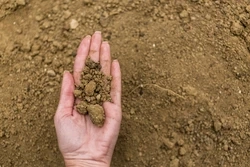Have you ever wondered about the bustling world beneath our feet? That's right, I'm talking about soil – the hidden hero that supports plant growth and sustains life. But, did you know that not all is well in this subterranean universe? Fungal risks can silently threaten soil health, impacting plants and ecosystems. Fear not, because we've got a super cool tool in our arsenal: microbiometer analysis! In this blog, we're going to explore how this nifty technique helps us uncover fungal risks and promote soil well-being. Let's dig in!
Introducing Microbiometer Analysis
So, what's a microbiometer? It's like a mini detective kit for soil. Instead of magnifying glasses and trench coats, it uses advanced technology to examine the microscopic world. Here's what you need to know:
What is a Microbiometer? A microbiometer is a high-tech gadget that lets us peek into the microbial communities living in the soil. These communities include bacteria, fungi, and other tiny organisms.
How Does it Work? It's all about DNA! The microbiometer reads the genetic material of these microbes, kind of like a barcode scanner. By decoding their DNA, we can figure out who's living where and in what numbers.
The Fungus Among Us
Time to meet the undercover agents of the soil world – fungi! These are like the secret agents of the microbial world, playing both good and not-so-good roles. Here's the lowdown:
Beneficial Fungi: Some fungi are like superheroes for plants. They form partnerships with plant roots, helping them absorb nutrients and water. It's a win-win relationship for fungi soil health.
Fungal Risks: However, not all fungi wear capes. Some can be troublemakers, causing diseases in plants. This is where microbiometer analysis comes to the rescue.
Unmasking Fungal Threats with Microbiometer Analysis
Imagine this: You've got soil samples from different parts of your garden, and you're wondering if any fungal baddies are lurking. Microbiometer analysis swoops in to save the day:
Identifying Fungal Species: By analyzing the DNA signatures of the microbes in your soil, the microbiometer can tell you which fungal species are present. This helps us spot potential threats.
Early Warning System: Detecting harmful fungi early is like stopping a villain before they wreak havoc. Microbiometer analysis helps us catch these threats before they can do significant damage.
Nurturing Soil Health
Now that we know how microbiometer analysis helps us spot fungal risks, it's time to talk about how to promote healthy soils:
Balancing Act: Armed with the information from microbiometer analysis, you can adjust your gardening practices. Introduce beneficial fungi to fight off the bad guys and create a balanced soil ecosystem.
Smart Planting: Some plants naturally resist fungal diseases. By choosing these plants for your garden, you're setting yourself up for success.
Amending the Soil: Microbiometer analysis also helps you decide which soil amendments to use. Certain amendments can encourage the growth of beneficial fungi and discourage harmful ones.
Conclusion
When we think of soil, we generally imagine a blank canvas for plants to grow on, but there's a whole microscopic universe beneath our feet that plays an important part in keeping our ecosystems healthy. Fungi stand out as important actors in soil health among these microbes. Using microbiometer data can help us analyze fungal diversity in soil and help us to understand how it affects soil health.


